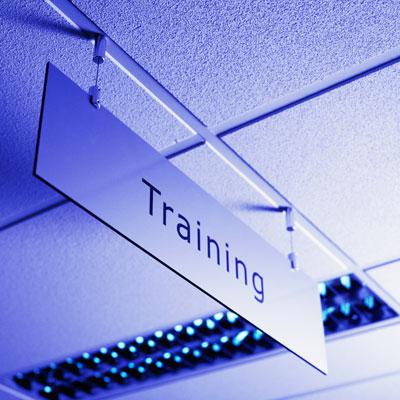Breaking It Down: 10 Big Changes Partners Should Know About The New Cisco Partner Program

Change Is In The Air
With the aim of nudging partners toward new wins in the cloud and managed services arenas, Cisco Tuesday unveiled a completely redesigned partner program at its annual Partner Summit in Las Vegas.
The changes are far-reaching, with everything from Cisco's partner certifications structure to its deal registration programs looking different than they did before. Partners, Cisco said, will have between 16 and 24 months to transition to the next-generation program.
Here are 10 big changes partners should know about to prepare for the jump.

1. No More Silver Status
Under the new Cisco partner program, the Silver status, which in the past has been the second-highest ranking behind Gold, is no more.
Cisco said its decision to retire the Silver level was based on partner feedback and the fact that, traditionally, it's really just served as a "stepping stone" to Gold. Today, there are roughly 70 Silver partners in the U.S. and 285 around the world, Cisco said.
By April 1, 2016, these partners have to make a choice: either earn the additional certifications and specializations required to reach Gold, or choose to drop down to Premier status with a Master specialization. These Master specializations, Cisco said, show a partner has deep knowledge of a specific Cisco technology or product set -- something it considers "as good as Gold."

2. Gold Partners Need Bigger Cloud, Services Footprints
In the new program, Cisco Gold partners need to be actively selling a minimum of four Cisco cloud or managed services offerings, and can only meet that requirement by selling at least one cloud service and at least one managed service.
Cisco said these cloud products could include either Cisco Powered Cloud Services, such as the Cisco Hosted Collaboration Solution (HCS), or Cisco cloud-based services such as WebEx or Meraki. Managed services could include partners' own Cisco-based managed services offerings, or any of Cisco's 11 Cisco Powered Managed Services, which include managed services for data center, security and collaboration.

3. Gold Partners Need Line-Of-Business Know-How
Another new requirement for Cisco Gold partners under the new program is that at least one person on their staff must achieve the Cisco Business Value Practioner, a new certification focused on selling to line-of-business customers rather than IT.

4. Premier Partners Also Need Cloud, Services Play
The new program also requires partners at the Premier level -- which is now second to Gold, with Silver going away -- to up their cloud and managed services games. Specifically, partners at this level need to be actively selling at least one Cisco cloud or managed services offering, and must also hold either a Cisco Express or Advanced Architecture Specialization.

5. Single Deal Registration Program
Under the new program, all of Cisco's separate deal registration programs -- including its Opportunity Incentive Program (OIP), Teaming Incentive Program (TIP) and Solutions Incentive Program (SIP) -- are being rolled into one. There are no changes, however, to VIP.
Cisco said the new combined deal registration program will have multiple tracks of partner rewards, many of which will be based requirements similar to those in the former three programs, and that the rewards will be stackable. Cisco said it decided to collapse the programs into one to make it simpler for partners to navigate.
The combined deal registration program also offers partners up to 8 discount points for registering a deal vs. 5 points as it has been in the past.

6. More Architecture Specializations
With the launch of its next-generation partner program, Cisco introduced two new Master Specializations: Enterprise Networks and Service Provider Technology.
Cisco said the new Enterprise Networks Specialization comes from the former Borderless Networks Specialization, which has been broken out into multiple specializations. This means there are a now a total of four Cisco Architecture Specializations: Data Center, Collaboration, Security and, now, Enterprise Networks.
The new Service Provider Technology Specialization is around carrier and service provider architectures.
Specializations will still fall under three categories -- Master, Advanced and Express -- so no changes there.

7. New Solutions Specializations
In addition to the new Enterprise Networks and Service Provider Technology Master Specializations, Cisco introduced an entirely new set of specializations called Solutions Specializations.
These, Cisco said, will be based off both current Cisco partner competencies but, in some cases, will involve some third-party requirements from Cisco technology partners. Out of the gate, Cisco is offering five Solutions Specializations: Flexpod, VSPEX/Vblock, Desktop Virtualization, Enterprise Mobility and Cisco TeleHealth.

8. A 'Modular' Approach To Earning Specializations
The new Cisco Partner Program also shakes up the process through which partners earn specializations. Cisco described the new approach as "modular," meaning there will still be a core set of training courses and requirements partners have to meet to earn specializations, but then they can pick and choose different "electives" to complete, based on their unique business practices or route to market. The aim, Cisco said, is to infuse more flexibility and give partners more choice throughout the process.
In addition, specialization renewals, moving forward, will only require partners learn and focus on what's new, rather than having to get recertified on the entire specialization every year.

9. Customer Satisfaction Scores
In the past, Cisco partners had to hit specific customer satisfaction scores, based on customer surveys, in order to maintain a certain certification level. Gold partners, for instance, had to hit a score of at least 4.3 points out of 5 in order to maintain their Gold status.
Under the new program, this is no longer the case. Cisco will continue to gather customer satisfaction scores, but partners can no longer lose their certification status because of those scores. Instead, if partners' scores are lower than expected, they will be asked to have a "follow-up" with Cisco.
Cisco said it decided to change this policy because, in the past, it found some partners were "over-managing" the system to avoid missing their target scores.

10. Lower Barrier To Entry For GPN
Lastly, Cisco made changes to its Global and Multi-National partner program -- or Global Partner Network (GPN) -- that reflect the Silver status being eliminated. These changes will also, according to Cisco, lower the barrier to entry for partners to get into the program.
In the past, for example, to be a Multi-National partner, solution providers had to hold Gold status in at least three countries and Silver status in at least three countries. Moving forward, partners will only need to hold two Gold and three Premier statuses to achieve the Multi-National certification.